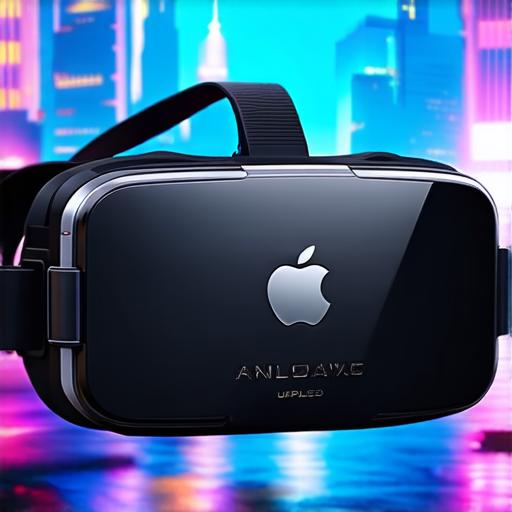Virtual Reality (VR) technology has been advancing rapidly in recent years, and it is becoming increasingly popular in various industries such as gaming, education, healthcare, and more. VR headsets are the primary devices used to immerse users in a 3D digital environment by tracking their movements and adjusting the visuals accordingly.

The most popular VR headsets include the Oculus Rift, HTC Vive, and Sony PlayStation VR. These devices require a high-powered computer or gaming console to function properly, as well as sensors that track the user’s movement.
In this article, we will explore the topic of virtual reality technology at Apple, examine the current state of VR headsets, and answer some frequently asked questions about this exciting technology.
Virtual Reality Headsets: A Brief Overview
A virtual reality headset is a device that immerses the user in a 3D digital environment by tracking their movements and adjusting the visuals accordingly. These devices are designed to be worn on the head, providing a full 360-degree view of the virtual world around them. VR headsets require a high-powered computer or gaming console to function properly, as well as sensors that track the user’s movement.
The Advantages of Virtual Reality Headsets
Virtual reality headsets offer several advantages over traditional methods of entertainment and education. These include:
- Improved immersion: VR headsets provide a level of immersion that is difficult to achieve with other forms of media, such as television or film. This makes it possible for users to feel like they are truly in the digital world around them.
- Enhanced learning experiences: VR has the potential to revolutionize education by providing students with immersive and interactive experiences that can help them better understand complex concepts. For example, medical students can use VR simulations to practice surgeries or biology students can explore the human body in a virtual environment.
- Increased engagement: Virtual reality headsets can be used to create highly engaging experiences that keep users interested and motivated. This makes it possible for developers to create more effective training programs or entertainment experiences.
Apple’s Virtual Reality Technology
Apple has been working on virtual reality technology for several years now. In 2015, the company acquired VR startup Metaverse Machine, which was working on a virtual reality headset called “RealityKit.” This technology is designed to make it easy for developers to create VR experiences using Apple’s iOS platform. RealityKit allows developers to create immersive and interactive experiences that can be accessed through the iPhone or iPad.
In addition to RealityKit, Apple has also been working on other VR technologies, including haptic feedback and gesture recognition. Haptic feedback technology can be used to provide tactile sensations to users in a virtual environment, making the experience more realistic. Gesture recognition technology can be used to allow users to interact with the virtual world using hand gestures or other movements.
Does Apple Sell a Virtual Reality Headset?
While there is no official word from Apple about whether they sell a virtual reality headset, it seems unlikely that the company would enter the VR market without investing heavily in research and development. After all, VR technology is still in its early stages, and there are many challenges to overcome before it becomes mainstream.
Furthermore, Apple has historically focused on creating consumer-friendly products that are easy to use and integrate into everyday life. It is unlikely that the company would create a virtual reality headset that was difficult to use or required significant setup.
However, it is worth noting that Apple’s CEO, Tim Cook, has expressed interest in virtual reality technology. In an interview with Wired magazine in 2016, Cook said: “We are very excited about virtual reality and augmented reality. I think these are incredibly immersive technologies that have the potential to change the way we interact with the world.”
Current State of VR Headsets
The VR market is rapidly evolving, with new headsets being released regularly. Some of the most popular VR headsets currently available include:
- Oculus Rift: The Rift is a high-end VR headset that requires a powerful computer to run. It features a wide field of view and high resolution displays, making for an immersive experience.
- HTC Vive: The Vive is another high-end VR headset that supports room-scale environments and has a wireless controller. It also features eye-tracking technology, which can be used to improve immersion and interaction with virtual objects.
- Sony PlayStation VR: The PSVR is a VR headset designed specifically for the PlayStation platform. It has a lower resolution than some other headsets but is more affordable and easy to set up.
The future of VR headsets looks promising, with new technologies being developed all the time. We can expect to see even more advancements in the coming years as VR technology continues to evolve.
FAQs
1. Does Apple have a virtual reality headset?
There is no official word from Apple about whether they sell a virtual reality headset. However, the company has been working on VR technology and has acquired a VR startup called Metaverse Machine.
2. What are some of the advantages of using a virtual reality headset?
Virtual reality headsets offer improved immersion, enhanced learning experiences, and increased engagement. These devices can be used for a variety of purposes, including gaming, education, and training.
3. Is virtual reality technology still in its early stages?
Yes, virtual reality technology is still in its early stages, and there are many challenges to overcome before it becomes mainstream. However, the technology has been advancing rapidly in recent years, and we can expect to see more advancements in the future.
